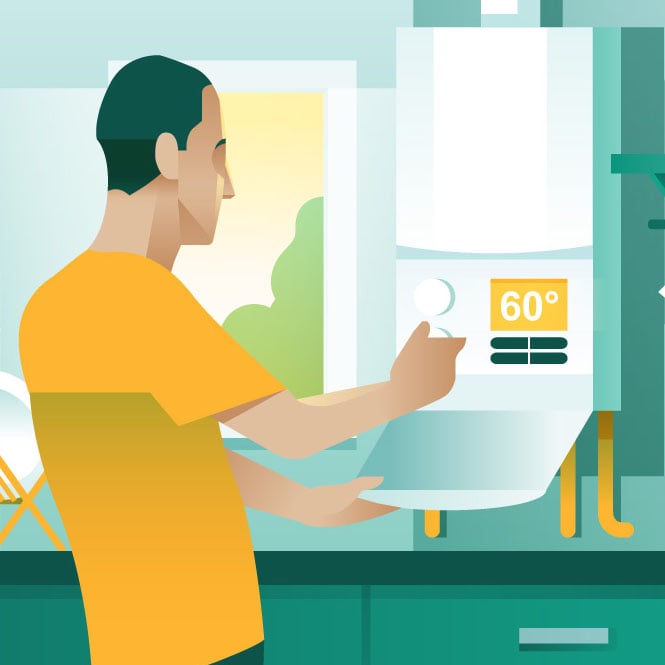How to change your boiler settings more regularly to save more money

*These figures were correct when blog was published but latest figures can be found here.*
21 December 2022
Nesta’s Money Saving Boiler Challenge encourages households to lower the flow temperature on their condensing combi boilers to 60°C. You can use our simple step-by-step tool to make this change.
Most combi boilers are installed to a temperature of around 80°C. An average household could save up to £65 per year by adjusting the boiler flow settings to 60°C. However, you can save even more by going lower than 60°C.
Save money by changing your flow temperature more often
Whilst reducing your boiler to a 60°C flow temperature could reduce your gas usage by around 9%, you could save even more money by lowering the flow temperature to 55°C.
We investigated the impact of this on average household savings through our Energy House project. The lower your flow temperature is set to, the more you save. However, at lower temperatures you might find your rooms take too long to heat up or aren’t reaching the temperature set on the thermostat.
Salford Energy House tests – gas saved at different flow temperatures of the boiler
| Starting flow temperature | Reduced flow temperature | Percentage saving on gas used for heating only | Overall gas saving, assuming heating accounts for 75% of total gas use |
| 80°C | 70°C | 5% | 3.9% |
| 80°C | 60°C | 12% | 9.1% |
| 80°C | 55°C | 16% | 12.1% |
| 80°C | 50°C | 23% | 17.4% |
A 12% gas saving could equate to around £150 off the average annual gas bill. It’s worth noting that some poorly insulated households may find that 55°C radiators are too cool for their home when it’s very cold outside. However, the radiators will still heat a room, it just may take a little more time and may not reach the temperature the thermostat is set to.
In warmer months, you can make bigger savings by lowering your flow temperature even further, like down to 50°C. In this way, you could adapt to the seasons and the weather outside by regularly changing your flow temperature settings. It’s safe and easy to change your boiler flow temperature settings multiple times over the year. The dials and buttons on the front of your boiler are there for you to use, you won’t damage your boiler by using these dials or buttons.
The best way to work out what flow temperature works for you in different seasons is to try reducing the flow temperature in 5°C increments. You could set your flow temperature to 50°C in October, raise it to 55°C in November and then raise it up to 60°C on the coldest days of the year. This way you are making bigger savings on the warmer days. Leave it at this new setting for a few days and see if you are happy with the temperatures of the rooms in your house. You can keep doing this until you find a temperature that works for you and your home.
There’s technology that can make the change for you!
If you have a modern “modulating” boiler, you can get a heating engineer to install a device that will automatically adjust your flow temperature. Two such technologies exist – called load compensation or weather compensation. Both will save energy in a similar way to reducing the flow temperature manually. These devices ensure that you are using a lower flow temperature when possible – without you needing to manually make any changes to your settings.
For details on how to turn down the flow temperature on your boiler, you can use our simple step-by-step tool.
Figures correct as at December 2022. Please note the views and advice in this blog post are provided by Nesta and are not attributable to partners of the Money Saving Boiler Campaign.

This step-by-step guide walks you through changing your boiler flow temperature
It’s quick, free and easy to do. It can be changed back instantly if necessary so there’s nothing to lose by trying it.

